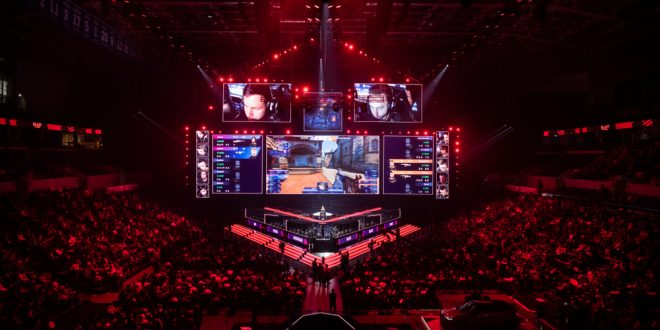As esports continues to engage new audiences, traditional broadcasters such as FOX and BT Sport have begun to optimise competitive gaming events such as Virtual F1 and eNASCAR in order to diversify their content.
Allan Hvid, Head of Esports and Football for TV 2 in Denmark, spoke at ESI’s Digital Summit, highlighting new dynamics between esports and traditional broadcasters in securing media rights, especially to captivate Gen Z and Millennial audiences.
He stated: “I definitely think that other broadcasters are going to go this way (investing in esports broadcast rights). As a broadcaster and a media channel you definitely want to have a young audience getting to know your shows and your broadcasts.
“I think that in five or 10 years Counter Strike will be competing with football. I think that Counter Strike can certainly compete with it because we can see that when we have Counter Strike on prime-time in our channels. The very young audience is there and they are going to stay there for six, seven or even eight hours. When they grow up I cannot see why it shouldn’t be able to compete with traditional sports.”
Whilst esports and lineal TV broadcast rights has become a recent phenomenon, online streaming platforms such as Twitch and YouTube have been prevalent in airing competitive gaming to its target demographics. YouTube Gaming, for example, has recently secured exclusive rights to the Overwatch League, Call of Duty League and other Activision Blizzard properties in order to secure the titles for its own platform.
Akin to this Torsten Haux, VP Global Media Rights at ESL, an esports organiser and production company primarily for CS:GO, agreed that terrestrial TV rights are going to increase, along with streaming platforms such as YouTube and Twitch. However, it is imperative that organisers carefully decide which platforms to secure broadcast rights with, insisting that right now revenue isn’t everything.
He explained: “If we create a massive arena event, most of the revenue is coming from the sponsorships. We need to get as many viewers as we can get on a worldwide perspective.
“Media rights are getting bigger and bigger and tapping into the market. But, first of all we would like to understand what is the vision of the partner. What exactly can they broadcast on its linear channels, its digital channels or on its social channels and how it would be broadcasted.
“To give an example, if we were to get a massive amount of money from a Pay Per View broadcaster it might be too early now because maybe nobody is going to watch it and we are losing all of our audience. It’s really about how our esports will be treated on the channel and of course we need to ask for some revenue to finance our big arenas.”
Both Hvid and Haux were speaking at one of ESI Digital Summit’s ‘Think’ panels, moderated by Irene Scholl-Tatevosyan – an Attorney for Nixon Peabody LLP. Scholl-Tatevosyan moved the topic on to what steps esports competitions and broadcasters need to make in order to enhance these potentially lucrative broadcast rights.
From a broadcasters perspective, Hvid answered: “For esports in general it’s about being broadcasted at the right times. I know that it’s difficult when you have partners all over the world but I think that is a big issue. We are not sure in the next year at what times, in what time-zones games will be played. Are we sure to have it at prime-time?
“I think that what we see is that if we have for example esports broadcasted in the afternoon, it makes the night better. Also if we have it at prime-time weekends we can see that it has performed really, really good ratings. But, if you’re not able to completely count on it, it’s a bit difficult. I think that if they (esports) could be a bit more centralised so that you also have games during the week that fits broadcasters, that would be better.”
On the other hand, Haux believes that it is imperative that esports competition attempt to make competitive gaming more relatable to classic sports in order to increase its demand for lineal broadcast partners.
He said: “We try to make esports as understandable as classic sports. We always get asked ‘hey, what is the world championship in Counter Strike?’ when in the end it just does not exist. So, it’s different that you can’t just talk about ‘the one Champions League’ or ‘the one world championship’. But we try to invest, and did a good job, in bringing the Pro Tour to the market.”
In terms of making esports more marketable, Haux added that, similarly to Germany’s integration of the NBA, it’s crucial that top content is produced in order to garner positive responses from audience members.
“Back in the days in Germany, like ten years ago, if you had been broadcasting the NBA it was quite small from the audience figures but the feedback from every single viewer more or less was super positive,” stated ESL’s VP of global media rights.
“I think that’s what you get being a broadcaster of esports, you immediately get positive feedback. It’s a very authentic and open minded community which first of all embraces partners.”
To conclude, Hvid highlighted that due to esports being a relatively new medium to lineal broadcasters, there is an ease of access between organisations and the media, something that makes the competitive gaming sector even more appealing to TV companies.
He explained: “If you have traditional sports, definitely football, it’s like you have people running into your shop shouting to buy your product and you get used to that. However esports organisations, teams, players are outside the shop saying ‘try and have a look at my shop and buy some of my products’. It’s a totally different mind set.
“It’s not difficult to ask for an interview. It’s not difficult to get it. We had an interview with some of the Astralis players yesterday and we had them for almost an hour each. I have never ever experienced that in the 20 years of football that I have been doing.
“We have to be realistic that it can maybe change because it will get more commercial. But, it’s really important that both the teams and the tournament organisers still think about that. I think that it’s going to be a problem for football over the next many years because it’s too closed.
“It’s really worth a lot for broadcasters that you have a connection to the teams and the players and that they understand this value.”









